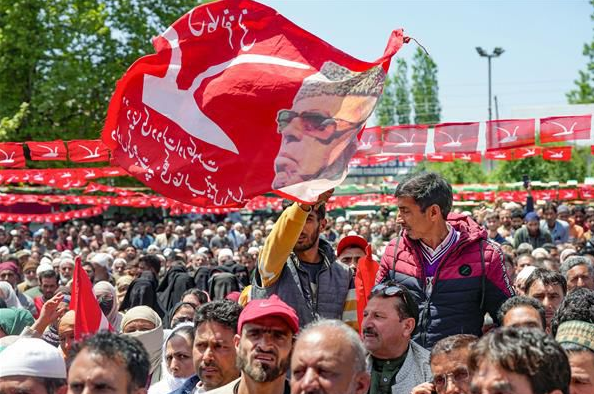Introduction:
In a surprising turn of events, the National Conference (NC) faced a seismic upheaval as a wave of mass resignation swept through its ranks. The catalyst? The contentious decision regarding the Ladakh region within the framework of the INDIA bloc. This move has not only exposed deep fault lines within the party but also triggered a debate on the intricacies of regional politics and national identity.
You May Also Like: UPI Link: India and Ghana Forge Path to Enhanced Financial Connectivity
The INDIA Bloc and Ladakh:
The INDIA bloc, a crucial geopolitical coalition, has been instrumental in shaping India’s stance on international platforms. Within this framework, the question of Ladakh’s representation has emerged as a flashpoint. Ladakh, with its complex demographic and strategic significance, embodies the challenges of diversity and sovereignty that resonate across the nation.
NC’s Dilemma:
For the National Conference, a prominent political entity in the region, navigating the INDIA bloc’s decision on Ladakh proved to be a daunting task. The party found itself at a crossroads, torn between the aspirations of its constituents and the imperatives of national unity. This dilemma underscored the broader tension between regional autonomy and centralized governance.
Resignation Wave:
The announcement regarding Ladakh’s representation within the INDIA bloc triggered a domino effect within the National Conference. A significant number of party members, including prominent leaders and grassroots activists, tendered their resignations in protest. This mass exodus laid bare the deep-seated divisions within the party, reflecting divergent perspectives on identity and allegiance.
Leadership Crisis:
Moreover, The mass resignation dealt a severe blow to the National Conference’s leadership structure. With key figures stepping down, the party faced a leadership vacuum at a critical juncture. The departure of seasoned politicians and seasoned strategists further exacerbated the sense of uncertainty and instability within the organization.
Impact on Regional Dynamics:
Furthermore, The upheaval within the National Conference reverberated across the political landscape of the region. Also, The vacuum created by the resignations opened up space for rival factions and new contenders to assert their influence. This dynamic reshuffling has the potential to redefine the power dynamics and electoral calculus in Jammu and Kashmir, setting the stage for a period of heightened political competition.
Challenges Ahead:
Moreover, As the dust settles on the mass resignation saga, the National Conference confronts a host of formidable challenges. Rebuilding trust within its ranks, charting a coherent political strategy, and regaining lost ground in the public eye are just a few of the hurdles that lie ahead. Moreover, the party must reconcile its regional identity with the imperatives of national cohesion, navigating the delicate balance between autonomy and integration.
Also, Visit: Adolf Hitler Roots of Tyranny: Unveiling Adolf Hitler’s Formative Years and Family Legacy
Conclusion:
In Conclusion, The mass resignation within the National Conference over the Ladakh issue serves as a poignant reminder of the complexities inherent in India’s diverse political landscape. Also, It underscores the delicate interplay between regional aspirations and national imperatives, highlighting the enduring tension between unity and diversity. As the party grapples with the fallout from this upheaval, it faces a formidable task of reinvention and renewal in the pursuit of its political objectives.
